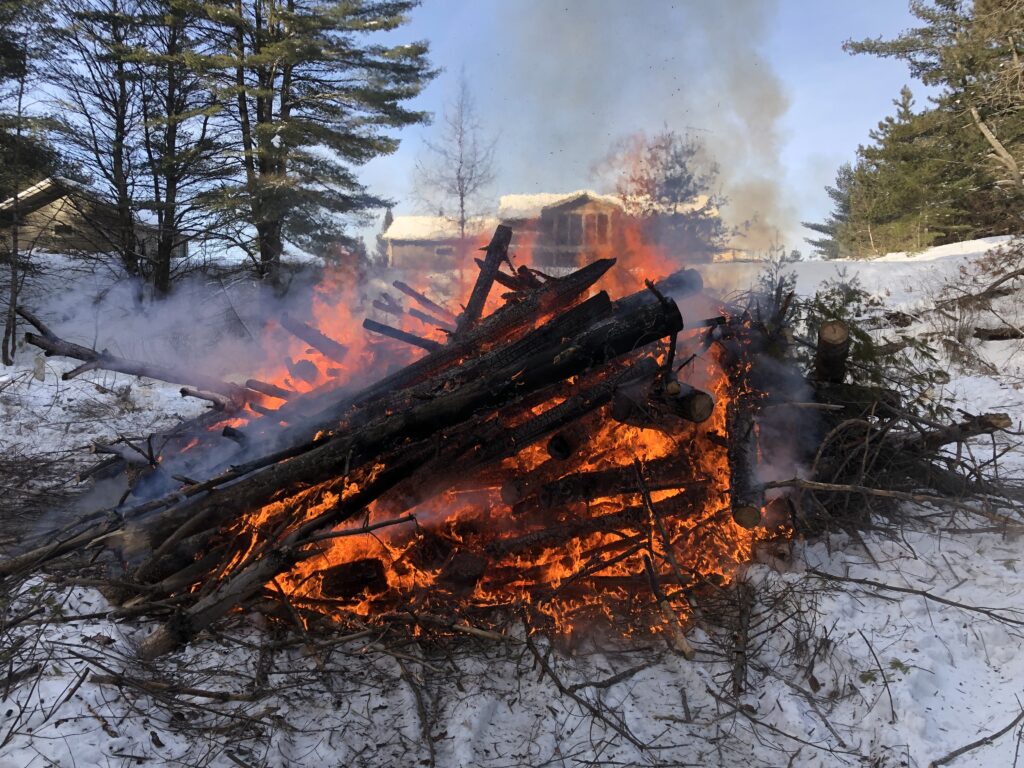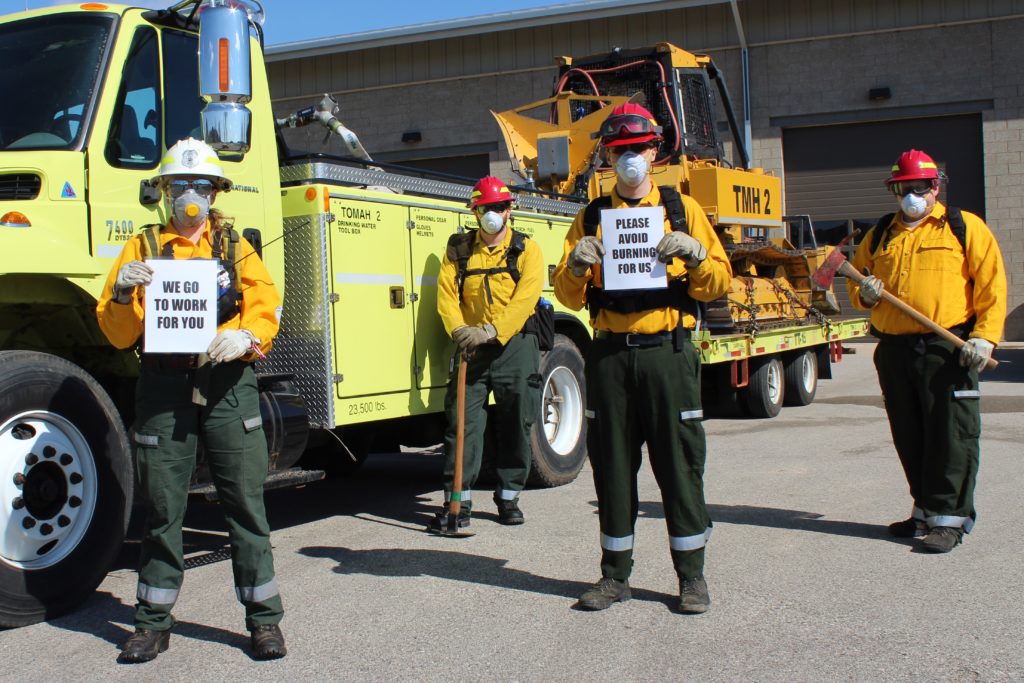Spring wildfire season is well underway in our snow-free areas of the state and DNR firefighters are squeezing in last minute training before things really heat up! Last weekend, DNR fire staff in northwest Wisconsin gathered with local fire departments at the new Minong Ranger Station for a structure branch training, which focuses on protecting structures in the event of large forest fires that threaten homes and communities.
Structure branch trainings happen every year throughout Wisconsin, dating back to the 1980s when they were initiated after experiencing large, highly damaging fires like the Five Mile Tower Fire that burned over 13,000 acres in 1977 and the Oak Lake Fire that burned 11,418 acres in 1980. The DNR’s fire staff works closely with local fire departments on wildland fires, so holding these trainings every year is crucial to strengthening those bonds.
Thank you to the Wascott Fire Department, Siren Fire Department, Webster Fire Department, Dairyland Volunteer Fire Department, Jackson Fire Department, Webb Lake Fire Department, Lake Nebagamon Fire Department, Grantsburg Fire Department, Town of Hayward Fire Department, Minong Fire Department, Gordon Volunteer Fire Department and Spooner Fire Department for joining us this year!

 • Gather and pile brush in an open area away from over-hanging branches.
• Gather and pile brush in an open area away from over-hanging branches. Spring is the peak wildfire season in Wisconsin, and we all play a part in reducing wildfire risk. This time of year, there is still a great deal of dead vegetation that dries out quickly and is available fuel for a wildfire.
Spring is the peak wildfire season in Wisconsin, and we all play a part in reducing wildfire risk. This time of year, there is still a great deal of dead vegetation that dries out quickly and is available fuel for a wildfire.